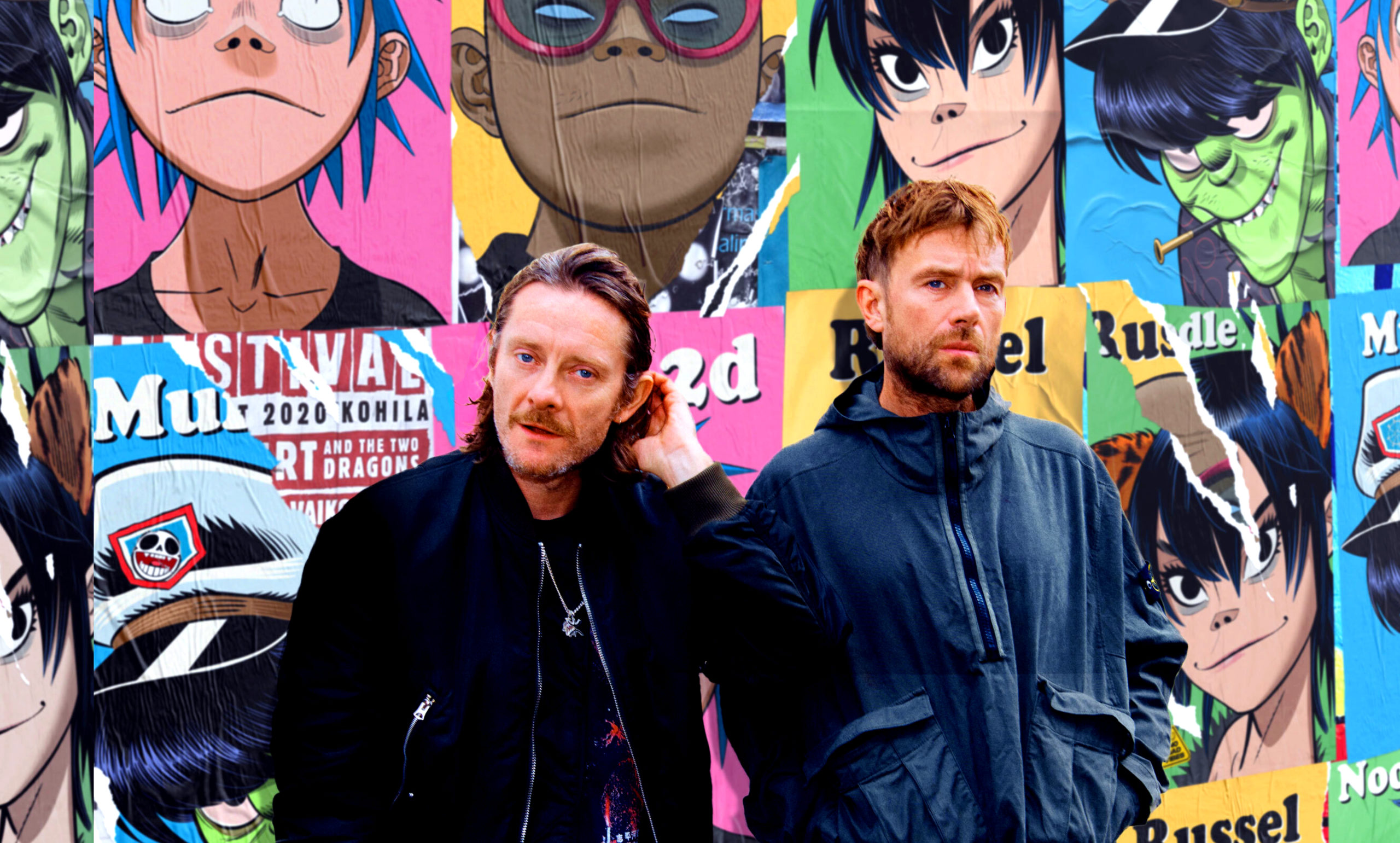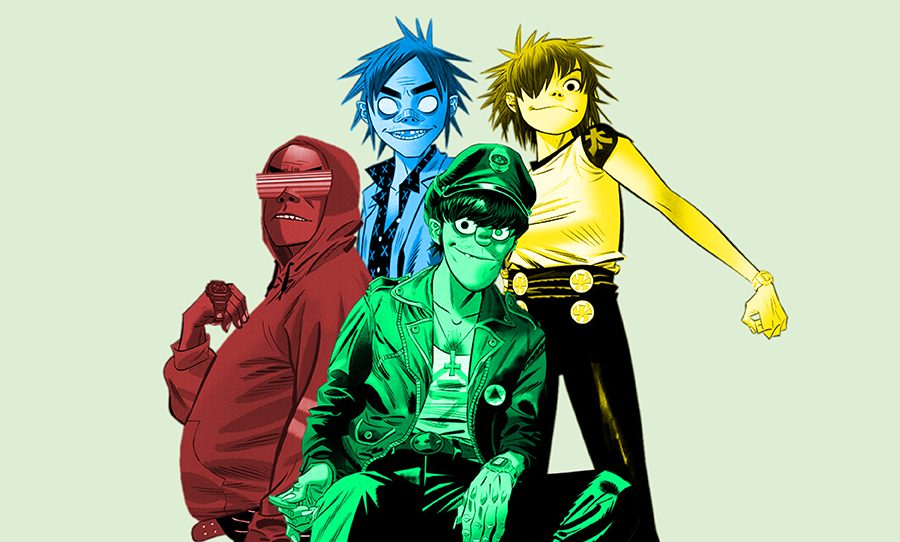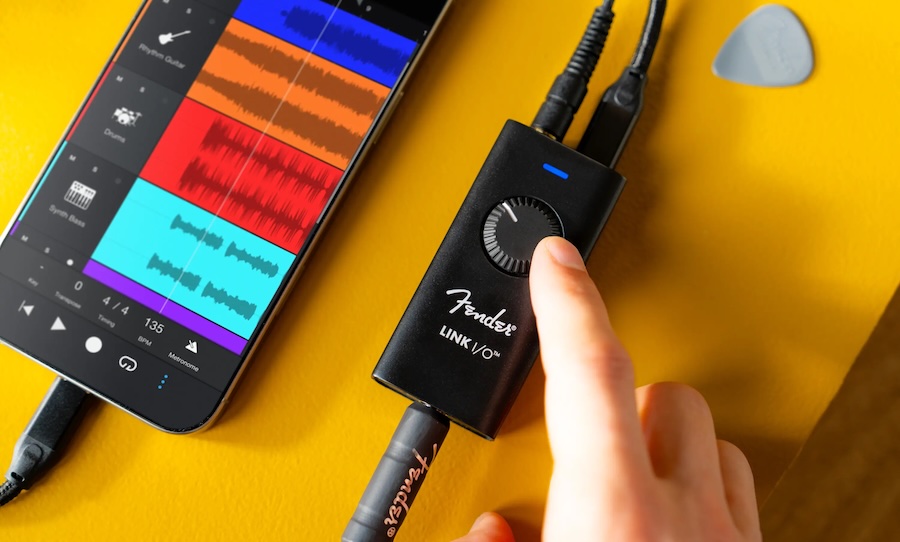As Gorillaz’ self-titled debut turns 22, we look back on the virtual band’s explosion onto the music scene.
Gorillaz have enjoyed stratospheric success over the past 20 years, even though they aren’t exactly real. If you grew up in the early 2000s, you’ll know exactly what I mean.
It’s 5 AM on a Saturday morning. You’ve woken up before your parents, and you’ve quietly snuck into the family TV room before anybody else. You can hear the high-pitched fuzz from the static electricity-ridden CRT TV, and you’ve flicked through the channels to the ABC. Rage is on, and as the sun rises, you’re immersing yourself in the latest booty-shaking montages that the early 2000s pop/R ‘n’ B scene has to offer.
Suddenly a video you’ve never seen comes on. A bunch of animated scumbags are putting the pedal to the metal in a souped-up dune buggy, doing loop-de-loops on a terribly constructed highway, dodging missiles shot by an aggressive UFO, and unloading their own artillery on the largest moose ever animated.
What the fuck is this?
The artist name would come up on the screen: Gorillaz. It might not have clicked at first, but after a bit of research, or after seeing more of their videos, it would slowly dawn on you that these scumbags in the car weren’t stand-ins for some other band.
This gang was the band. The two in the front seat were Murdoc and 2D, the bassist and frontman respectively, and the two in the back were the drummer and keyboardist, Russel and Noodle.
Now if you were anything like me, the idea of a ‘virtual band’ filled you with a huge sense of curiosity and excitement. Not only was the song a banger, but you had never seen anything like this before. And if you’re anything like me, you were so excited that you rushed to the nearest Sanity with your pittance of pocket money to buy the CD.
And if you’re still anything like me, you played the CD again and again and again on your blue Sanyo CD player, flicking through the art book in the liner, unable to get the thought out of your head: “This shit is really really cool.”

Actually virtual
Gorillaz in reality was made up of the musical contributions of Blur frontman and Brit-rock icon Damon Albarn, with visual direction from Tank Girl artist Jamie Hewlett. But even with iconic artists behind the curtain, Gorillaz’ aesthetic presence was so strong that it overrode everything else. Audiences were all too keen to suspend their disbelief and immerse themselves in the world of the virtual band, and so whilst people were likely to recognise Albarn’s voice, or Hewlett’s art style, it didn’t matter.
2D and Murdoc were steering this Dune Buggy, and it was an exciting ride to be on.
So when they blew up in popularity, nobody was surprised. The 2000s were upon us, and to bring in this new future of technology was a whole-ass music group, made up of characters who exist in a totally virtual dimension — and whose music defied all of the current concepts of what pop art could be. It broke down the barriers of where music ends and visual art begins, blurred the lines between reality and technology, and resulted in a discography full of some of the most original compositions ever written.
And it helped that the music was so good.
Gorillaz gave Albarn a mask to hide behind, which let him break away from the restrictive Britpop aesthetic that Blur confined him. The tunes can be heard as a clear ‘fuck you’ to the idea of being pigeonholed into a single genre of music. Whether it be in the Zappa-like mastery with which they fuse genres, the incredible performances they extract from their collaborators, or the ways they break down the concepts of what music is supposed to be — Gorillaz have been redefining everything since their self-titled album dropped.
The project has evolved just as much as any fan of their noughties output could’ve dreamed it would, with classic records like Demon Days and Plastic Beach amongst their discography, and having wrapped up 2020 on a highly positive note with their Song Machine series of collaborative singles, it’s interesting to look back on their debut: the album that started it all.
Gorillaz (2001)
Gorillaz opens on the song Re-Hash, and straight off the bat can we see the way that 2D and the gang are breaking down genre barriers. In this three-minute track, we get a strumming indie-rock guitar alongside 808 slides and a boom-bap drum loop, vocal chops reminiscent of ’50s and ’60’s Beach Boys rock, and a sitar. On top of all that: a fucking electronic harpsichord solo. If I saw you loading all that gear into a studio to record one song in 2021, I’d be sceptical, let alone in 2001, a year where Train’s Drops of Jupiter placed fourth on the charts.
This balls-to-the-wall mentality continues into 5/4 —a song that’s written in its’ namesake time signature — through to New Genius, which blends the vinyl scratches and melodica riffs of the dub genre with reverbed rim shots ripped straight from Outkast’s Elevators.
Clint Eastwood uses much of the same elements, with one of the most memorable melodica hooks of the past century (name a more famous one, I dare you), a catchy-as-fuck chorus, fire verses from Del the Funky Homosapien, and a slick and villainous string section underneath.
The next highlight on the tracklist is Rock the House: a bafflingly strong hip-hop instrumental with a huge horn section and one of the funniest flute solos you’ll ever hear. Del’s reappearance on this track, delivering a killer hook and a non-stop onslaught of rhymes, once again stands as a testament to Gorillaz’ collaborative strength. They know where the heat lies on the song, and are able to unapologetically stand back when they know that the collaborator doesn’t need any help to murder it.
Slow Country and 19-2000 incorporate elements of synth into the instrumentation to make some infamously catchy tunes. M1A1 closes the album on a punky heaver, reminiscent of Albarn’s more thrashy work as Blur.
20 years young
There’s no doubt about the impact that Gorillaz had in its initial years, with many of the singles from their debut and sophomore record demanding an eternal place in the hearts of many music fans. But what’s even more amazing is the way in which they’ve been able to retain this relevance. 20 years on and the world’s first virtual band is still putting out incredible songs, with the always-beautiful accompanying visuals from Hewlett. And there’s no end in sight.
And so on this momentous birthday, let’s look forward to the incredible singles on the horizon.
After all, The future is coming on.



